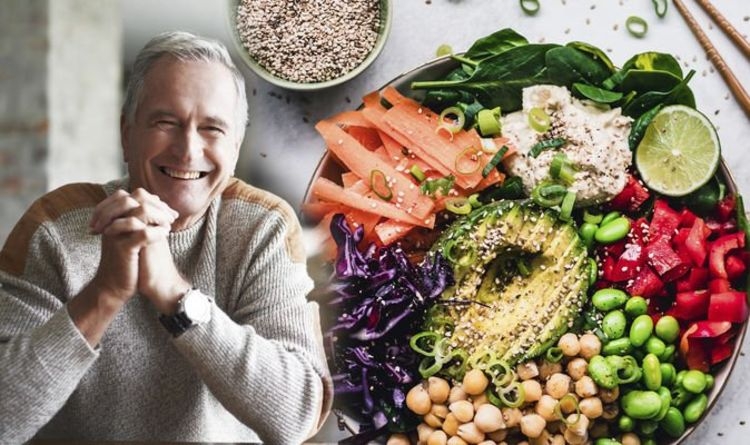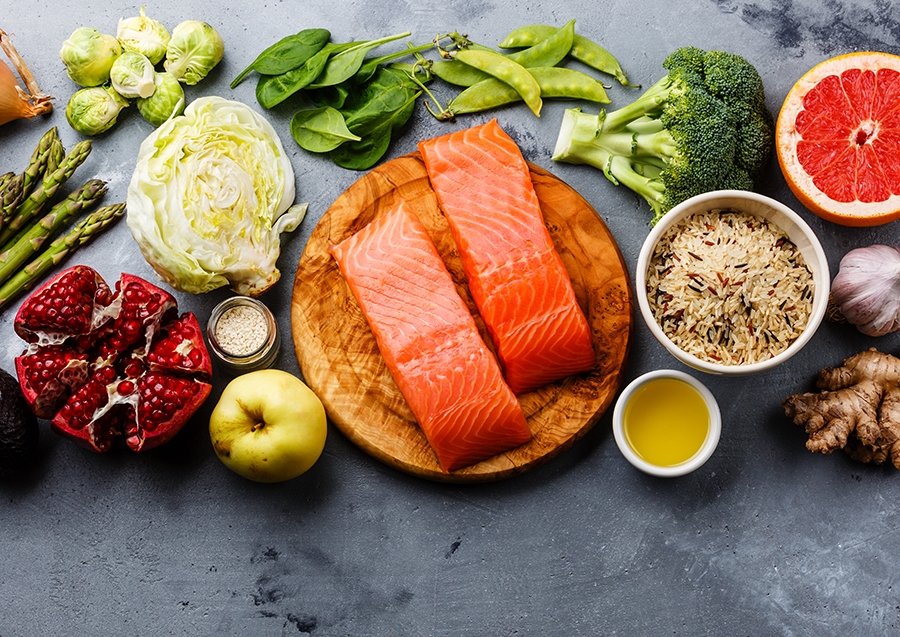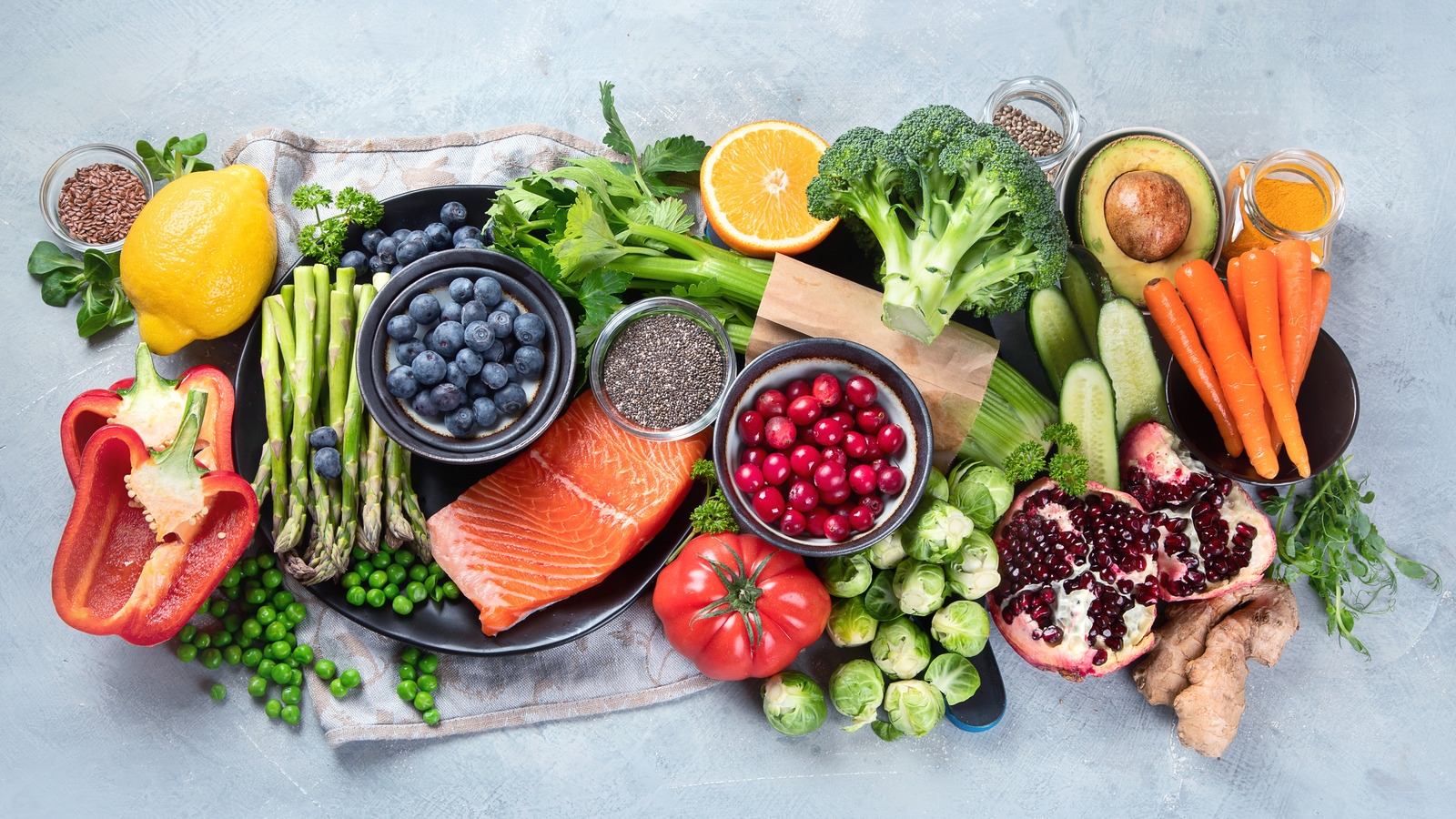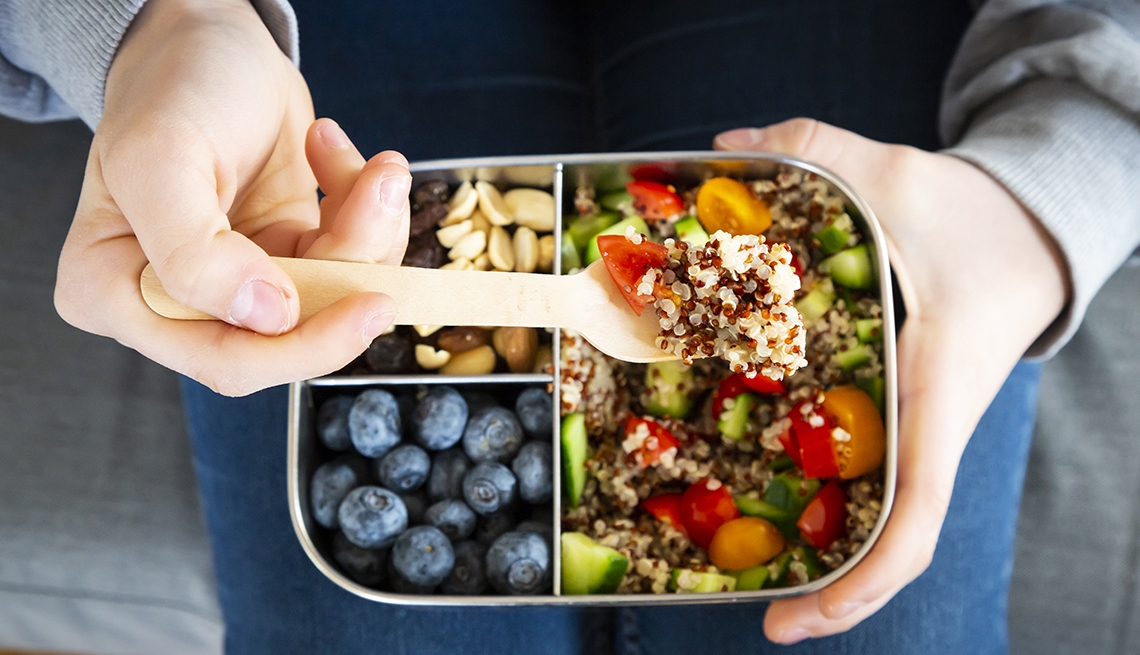Top 10 Best Magic Foods That Can Help You Live Longer
 |
| How To Live Healthy: Best Food That Can Help You Live Longer Knowinsiders.com |
| Table of Content |
People can live longer if they stick to a diet rich in beans and whole grains and less red and processed meat.
According to Dr. Megan Rossi, switching diets can prolong life. British doctor information, there are 6 superfoods that can add "decades to your life".
While you can't predict with 100% accuracy how long you'll live, research shows you can potentially increase your lifespan by 10 years by following a simple diet.
Gastrointestinal health physician Megan Rossi praised the benefits of six superfoods in the journal PLOS Medicine. These are legumes, grains, seeds, fruits, vegetables, herbs, and spices.
Accordingly, eating 20g of nuts per day can increase life expectancy by 2 years. Switching to whole grains increased by 3 years.
Dr. Rossi also recommends including 30 different types of plants in your diet each week. The simple way is to try different types of beans.
Let’s explore effective ways to live longer and healthier with the best food and diets.
Defining Longevity and Life Expectancy
 |
| Photo: Sound Health and Lasting Wealth |
The term "longevity" is sometimes used as a synonym for "life expectancy" - however, the term "longevity" is sometimes meant to refer only to, especially long-lived members of a population, whereas "life expectancy" is always defined statistically as the average number of years remaining at a given age.
Life expectancy at birth has risen rapidly during the last century due to many factors, including reductions in infant mortality, rising living standards, improved lifestyles and better education, as well as advances in healthcare and medicine.
Economic development and the improvement in some environmental conditions (for example in many urban areas), improved lifestyles, advances in healthcare and medicine, including reduced infant mortality, have resulted in a continuous increase in life expectancy at birth during the last century.
Significant factors in life expectancy include gender, genetics, access to health care, hygiene, diet and nutrition, exercise, lifestyle, and crime rates. Evidence-based studies indicate that longevity is based on two major factors, genetics, and lifestyle choices.
Twin studies have estimated that approximately 20-30% of an individual's lifespan is related to genetics, the rest is due to individual behaviors and environmental factors which can be modified. In addition, it found that lifestyle plays almost no factor in health and longevity after the age of 80, and that almost everything in advanced age is due to genetic factors.
9 Factors That Affect Longevity
 |
| Photo: Eat This, Not That |
1. Gender
According to the Institute and Faculty of Actuaries, mortality rates for females are lower at each age than those of men. Women live longer than men, on average.
The current overall life expectancy for U.S. men is 76.4 years, and 82.9 years for men at age 65. Overall life expectancy for U.S. women is 81.2 years, or 85.5 years for women at age 65.
Some studies attribute this gap in part to riskier behavior among men that may lead to higher rates of accidents.
2. Genetics
There appears to be a link between genetic factors and mortality rates. Genetics may play a role in nine of the top 10 causes of death, according to the Centers for Disease Control. The CDC lists the leading causes of death in the United States as:
Heart disease
Cancer
Chronic lower respiratory disease
Accidents
Stroke or cerebrovascular disease
Alzheimer’s disease
Diabetes
Influenza and pneumonia
Kidney disease
Intentional self-harm or suicide
3. Prenatal and childhood conditions
Poor conditions in utero, at birth and in very early childhood are associated with higher mortality even at advanced ages, according to IFA. The Society of Actuaries has been studying the impact of early childhood conditions on exceptional longevity, including whether growing up in a city or farm environment affects longevity, as well as whether growing up in certain geographic areas is associated with differing life expectancies.
4. Education
Higher education levels are linked to higher socio-economic status and both are linked to improved longevity, according to Hall and Peterson.
For those with a bachelor's degree or higher, life expectancy at age 25 increased by 1.9 years for men and 2.8 years for women, according to the CDC. On average, a 25-year-old man without a high school diploma has a life expectancy 9.3 years less than a man with a bachelor's degree or higher. Women with a high school diploma have a life expectancy 8.6 years less than their counterparts with a bachelor's degree or higher, the CDC said.
Higher education levels were also associated with lower levels of obesity and tobacco use, which may correlate with greater longevity, according to CDC data.
5. Socio-economic status
As socio-economic status decreases, so does life expectancy, according to the IFA. Among other things, socio-economic status can affect a person’s ability to access adequate medical care and their participation in healthier lifestyle habits like exercising more, smoking less and maintaining a healthy weight.
6. Marital status
Married people have lower mortality rates than those who were never married, are divorced or are widowed, according to IFA. Various studies suggest that marriage or committed relationships may improve cardiac health, help combat isolation and loneliness that can negatively impact mental health, and motivate people to make healthier choices like keeping regular doctor visits and giving up unhealthy habits.
7. Ethnicity/migrant status
The CDC tracks data related to ethnicity and life expectancy. According to 2011 data compiled by the CDC, life expectancy is highest among Hispanic people — both male and female. Life expectancy ranged from 71.7 years for non-Hispanic black males to 83.7 years for Hispanic females.
Ethnicity or migrant status may also be associated with socio-economic status. Mortality of migrant people appears to vary as a result of differences in average mortality between host and home countries, as well as healthy selection for migration or return and length of residence in the host country, IFA said.
8. Lifestyle
Historically, lifestyle factors that affect mortality include an unhealthy diet, inadequate exercise, tobacco use, excessive use of alcohol, risky behaviors, food safety, work place safety and motor vehicle safety. Today, the major lifestyle factor that affects mortality is obesity. Nearly 5 percent of adults are considered extremely obese, compared with about 1 percent in 1962; more than 30 percent are considered obese compared with about 13 percent in 1962; and nearly 70 percent of adults are overweight today compared with about 46 percent in 1962.
9. Medical technology
Advances in medicine and medical technology have had a major impact on increased longevity. Development of antibiotics and immunizations, as well as improvements in imaging, surgery, cardiac care and organ transplants all have helped push the average life expectancy higher.
Changing your diet could add ten years to your life – new research
 |
| Photo: Shutterstock |
Everyone wants to live longer. And we’re often told that the key to doing this is making healthier lifestyle choices, such as exercising, avoiding smoking and not drinking too much alcohol. Studies have also shown that diet can increase lifespan.
A new study has found that eating healthier could extend lifespan by six to seven years in middle-aged age adults, and in young adults, could increase lifespan by about ten years.
The researchers brought together data from many studies that looked at diet and longevity, alongside data from the Global Burden of Disease study, which provides a summary of population health from many countries. Combining this data, the authors were then able to estimate how life expectancy varied with continuous changes in intake of fruit, vegetables, whole grains, refined grains, nuts, legumes, fish, eggs, dairy, red meat, processed meat and sugary drinks.
The authors were then able to produce an optimal diet for longevity, which they then compared with the typical western diet – which mostly contains high amounts of processed foods, red meat, high-fat dairy products, high-sugar foods, pre-packed foods and low fruit and vegetable intake. According to their research, an optimal diet included more legumes (beans, peas and lentils), whole grains (oats, barley and brown rice) and nuts, and less red and processed meat.
The researchers found that eating an optimal diet from age 20 would increase life expectancy by more than a decade for women and men from the US, China and Europe. They also found that changing from a western diet to the optimal diet at age 60 would increase life expectancy by eight years. For 80-year-olds, life expectancy could increase by almost three and a half years.
But given it isn’t always possible for people to completely change their diet, the researchers also calculated what would happen if people changed from a western diet to a diet that was halfway between the optimal diet and the typical western diet. They found that even this kind of diet – which they called a “feasibility approach diet” – could still increase life expectancy for 20-year-olds by just over six years for women and just over seven years for men.
The life expectancy estimates this study makes come from the most thorough and recent meta-analyses (a study that combines the results of multiple scientific studies) on diet and mortality.
While meta-analyses are, in many cases, the best evidence because of the amount of data analysed, they still produce assumptions with the data, which may cause important differences between studies to be ignored. It’s also worth noting that the evidence for reducing consumption of eggs and white meat was of a lower quality than the evidence they had for whole grains, fish, processed meats and nuts.
There are also a few things the study didn’t take into account. First, to see these benefits, people needed to make changes to their diet within a ten-year period. This means it’s uncertain if people may still see benefits to their lifespan if they make changes to their diet over a longer period of time. The study also didn’t take past ill-health into account, which can affect life expectancy. This means that the benefits of diet on life expectancy only reflect an average and may be different for each person depending on a variety of other factors, such as ongoing health issues, genetics and lifestyle, such as smoking, drinking alcohol and exercise.
 |
| Photo: Shutterstock |
But the evidence the researchers looked at was still robust and drawn from many studies on this subject. These findings also align with previous research which has shown that modest but long-term improvements to diet and lifestyle can have significant health benefits – including longevity.
It’s not yet entirely clear all the mechanisms that explain why diet can improve lifespan. But the optimal diet that the researchers uncovered in this study includes many foods that are high in antioxidants. Some research in human cells suggests that these substances may slow or prevent damage to cells, which is one cause of ageing. However, research in this area is still ongoing, so it’s uncertain whether antioxidants that we consume as part of our diet will have the same effect. Many of the foods included within this study also have anti-inflammatory properties, which may also delay the onset of various diseases – and the ageing process.
Of course, changing your diet completely can be difficult. But even introducing some of the foods shown to increase longevity may still have some benefit.
What Superfood That Can Help You Live Longer?
 |
| Photo: AARP |
1. Nuts
It’s easy to see why nuts land on every list of superfoods. “They’re a dense source of nutrients that can support our immune system and metabolism, balance inflammation and gut health, promote brain and heart health, as well as offer cancer preventive properties,” says Stacy Kennedy, a registered dietitian in Wellesley, Massachusetts. No wonder they promote longevity.
In a study published in BMC Medicine, researchers enlisted more than 7,000 adults between the ages of 55 and 80 who were at high risk for cardiovascular disease and asked them to follow one of three diets: a Mediterranean diet supplemented with extra nuts, the same diet but with additional extra virgin olive oil instead of nuts, or a low-fat diet. After five years, those who consumed more than three one-ounce servings of nuts per week had a 39 percent lower overall mortality risk than the non-nut eaters. In fact, over the course of the study, the nut eaters had the lowest total death risk. “Nuts give us fiber, protein, healthy fats and key vitamins and minerals like omega-3s, vitamin E, calcium and selenium,” Kennedy says.
2. Cruciferous Vegetables
Broccoli, cauliflower, Brussels sprouts, cabbage, and other cruciferous vegetables are often talked about in their relation to a healthy digestive system (which is incredibly important for overall health), but eating these crunchy vegetables is also linked to a number of benefits related directly to living longer. They're rich in fiber, antioxidants and vitamins A,C and K — all of which are associated with healthy aging.
Sulphorphane, an antioxidant primarily found in cruciferous vegetables, is known to have anticancer benefits, provide possible protection against heart disease, and even support blood glucose control in people with type 2 diabetes.
Roast, shred into a slaw, sauté with garlic and oil, or add to a soup. These are just a few of our favorite ways to take advantage of that cruciferous crunch.
3. Berries
Berries have long been studied for health benefits ranging from reducing risk of cardiovascular disease, protection against cancer, and lower levels of inflammation.
What's even more intriguing about berries is their potential effect on brain health. The Nurses Health Study, which followed over 16,000 participants over the age of 70, found that greater intakes of blueberries and strawberries were linked to slower cognitive decline. Another study showed that blueberry extract may actually improve memory.
In many regions, fresh berries are only available (or affordable) for a few short months of the year, but frozen berries are just as nutritious as they are picked at their peak ripeness. Enjoy them straight out of the container as a snack; on your yogurt or oatmeal; in a salad or smoothie; or made into a salsa for fish or poultry.
4. Olive oil
Wondering why olive oil gets star billing on the Mediterranean diet? Researchers think the heart-healthy monounsaturated fats in olive oil — particularly the virgin and extra virgin variety — are a major factor. Olive oil is also loaded with polyphenols, potent antioxidants that may help protect against several age-associated ailments, including Alzheimer’s, Parkinson’s, cardiovascular disease and cancer.
Obviously, both olive oil and nuts are calorie dense. How can you reap the benefits of these superfoods without gaining weight? “You don’t need to eat large portions of nuts or olive oil to get the benefits,” Kennedy says. She suggests adding a tablespoon of olive oil to sauces or as a dressing, or reaching for a small handful of nuts as a snack with fruit or to sprinkle over a salad or into oatmeal.
5. Whole Grains
Grains (and carbs in general) have been demonized in recent years for their supposed connection to a variety of health concerns, but research truly supports the benefits of consuming whole grains for health and longevity. Whole grains are a staple in the diets of both Sardinians and Ikarians, two Blue Zone regions that follow a Mediterranean-style diet. People of Ikaria live, on average, 8 years longer than Americans and experience 20 percent less cancer, half the rate of cardiovascular disease, and minimal dementia.
One review found that consuming three servings of whole grains per day was associated with a 25 percent lower risk of dying of cardiovascular disease when compared to those that ate fewer than that.
Whole grains in their original form such as farro, wheat berries, quinoa, and oats offer the most health benefits, but choosing whole-grain bread and pasta when possible is also recommended. Cornmeal and popcorn are also considered whole grains.
6. Green Tea
What's in your mug could be just as important as what's on your plate. Green tea is known for its potential to reduce cancer risk, but the benefits don't stop there.
One study that looked at green tea consumption and risk of death in those that experienced a stroke or heart attack found that the biggest tea drinkers (7 cups per day) had up to a 62 percent lower risk of death when compared to non-green tea drinkers. If that sounds like more green tea than you can stomach, not to worry — some benefits were still seen in those that drank one to two cups per day.
7. Pomegranate
The pomegranate is a unique fruit, containing tiny, crisp, juicy arils with a tasty mix of sweet and tart flavors. The signature phytochemical of pomegranate, punicalagin, is the most abundant and is responsible for more than half the antioxidant activity of pomegranate juice. Pomegranate phytochemicals have a variety of anti-cancer, cardio-protective and brain-healthy actions. Most notably, a study of patients with severe carotid artery blockages who drank one ounce of pomegranate juice daily for one year found a 30 percent reduction in atherosclerotic plaque; in the control group, atherosclerotic plaque increased by nine percent. In another study of older adults, those who drank pomegranate juice daily for 28 days performed better on a memory task compared to those who drank a placebo beverage.
Tip: To remove the edible arils from the fruit, score it around a half inch deep on the diameter, twist to split it in two and pound the back with the back of a large spoon.
8. Mushrooms
Consuming mushrooms regularly is associated with a decreased risk of breast cancer. Because they contain aromatase inhibitors, compounds that inhibit the production of estrogen, white and portobello mushrooms are especially protective against breast cancer. Mushrooms have quite an array of beneficial properties. Studies on different types of mushrooms have found anti-inflammatory effects, enhanced immune cell activity, prevention of DNA damage, slowed cancer cell growth and angiogenesis inhibition. Mushrooms should always be cooked; raw mushrooms contain a potentially carcinogenic substance called agaritine that is significantly reduced by cooking. Regularly include common white mushrooms in your diet and try some of the more exotic varieties like shiitake, oyster, maitake or reishi.
9. Onions and Garlic
The allium family of vegetables, of which onions are a member, benefit the cardiovascular and immune systems and have anti-diabetic and anti-cancer effects. Increased consumption of allium vegetables is associated with a lower risk of gastric and prostate cancers. These vegetables are known for their organosulfur compounds which help prevent the development of cancers by detoxifying carcinogens, halting cancer cell growth and blocking angiogenesis. These compounds are released when they are chopped, crushed or chewed. Onions also contain high concentrations of health-promoting flavonoid antioxidants, which have anti-inflammatory effects that may contribute to cancer prevention. In addition to garlic and yellow onions, try leeks, chives, shallots and scallions.
10. Tomatoes
An abundance of health-promoting nutrients can be found in tomatoes – lycopene, vitamins C and E, beta-carotene and flavanol antioxidants, to name but a few. Lycopene in particular protects against prostate cancer, UV skin damage and cardiovascular disease. About 85 percent of the lycopene in American diets is derived from tomatoes. Lycopene is more absorbable when tomatoes are cooked – one cup of tomato sauce has 10 times the lycopene as one cup of raw, chopped tomatoes. Also keep in mind that carotenoids, like lycopene, are best absorbed when accompanied by healthy fats, so enjoy your tomatoes in a salad with nuts or a nut-based dressing for extra nutritional punch. Tip: buy diced and crushed tomatoes in glass jars, not cans, to avoid the endocrine disruptor BPA in can liners.
 Top 7 Amazing Foods in New Mexico Top 7 Amazing Foods in New Mexico As we all know, New Mexico is nicknamed “The Land of Enchantment” for its natural beauty and rich history, including its amazing foods. |
 Top 7 Amazing Food You Must Try in Michigan Top 7 Amazing Food You Must Try in Michigan Michigan food is blessed with such variance in culture and resources that you can’t pin down any specific Michigan foods as being “the” iconic favorite. |
 Only in Mississippi - Top 7 Scrumptious Foods You Must Try Only in Mississippi - Top 7 Scrumptious Foods You Must Try Apart from the beautiful landscape, Mississippi always wows its tourists with an abundance of delicious foods. |
 Top 7 Most Delicious Foods in Kentucky Top 7 Most Delicious Foods in Kentucky Kentucky is famous for its outstanding visiting destinations including big cities, rolling agricultural land and so on. |


























